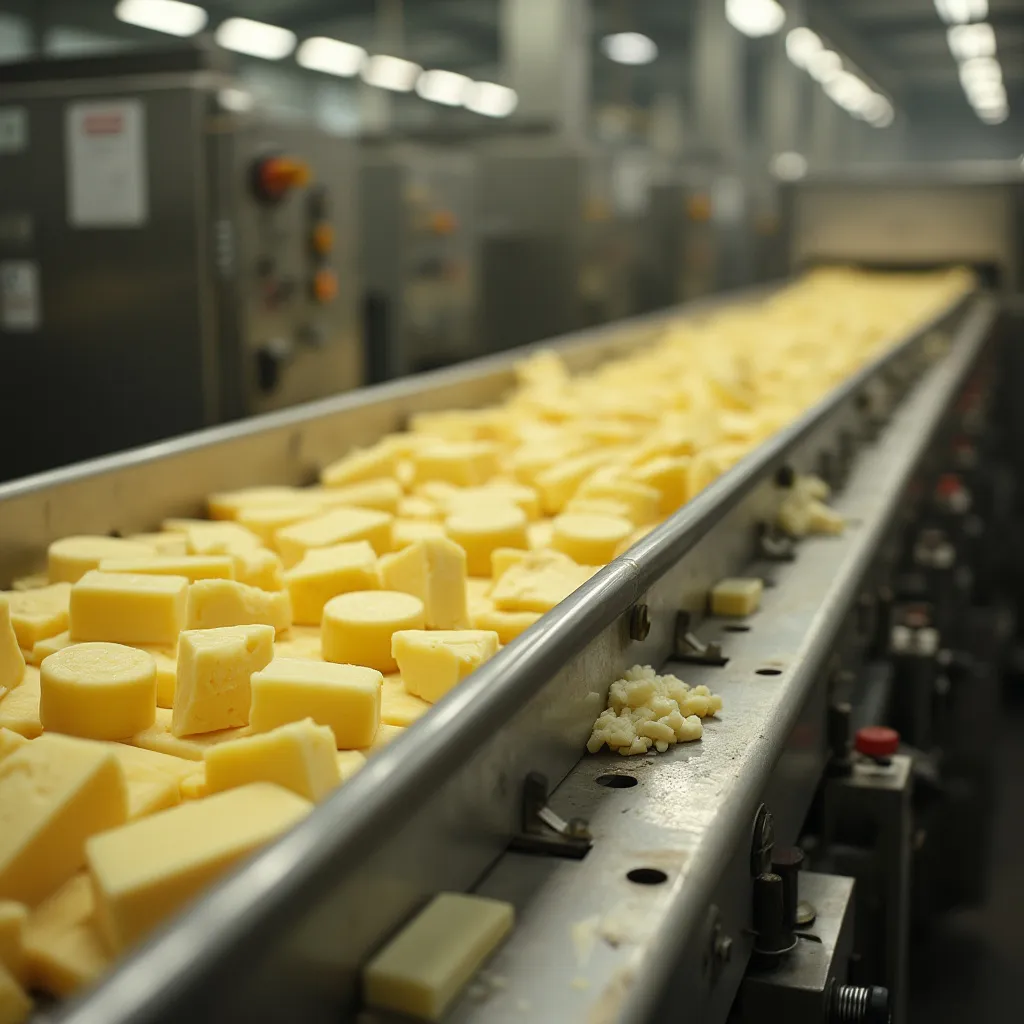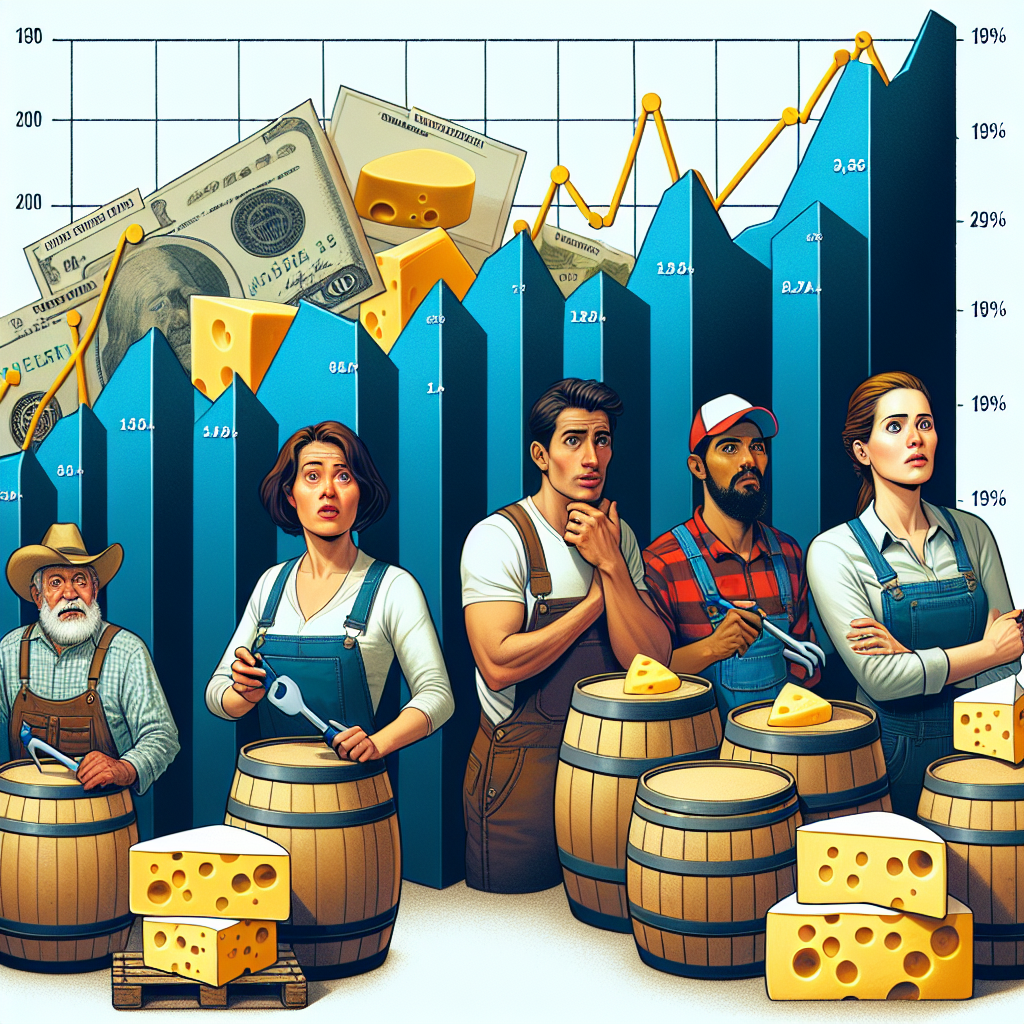Unpack the dairy market’s trends: excess butter, booming cheese exports, and changing prices. What do these shifts mean for your dairy strategy?
Summary:
This past week, the dairy markets brimmed with insights, providing industry professionals plenty to chew on. As holiday feasting dominated the U.S., so analyzed dairy production and export data. Butter inventories and output soared beyond previous records, prompting discussions about price stabilization. Meanwhile, the cheese sector reclaimed momentum with robust exports and lifted producers’ incomes. Regarding milk powders, there’s a tug-of-war between declining production volumes and strong exports, which adds complexity. Whey markets remained vigorous, benefiting from a surge in high-protein products. Class III and IV milk futures reflected these market dynamics amid these fluctuations, while the corn and soybean markets revealed their trends, influenced by international demand.
Key Takeaways:
- Butter production and inventories are high, which has caused prices to decrease, potentially stabilizing for the time being.
- Cheese production has increased slightly, with record-breaking exports that help manage inventory levels.
- Nonfat dry and skim milk powder production significantly decreased, influencing market dynamics.
- Whey market demands are intense, driving up prices and impacting the pricing of Class III milk.
- Class III and IV milk prices are experiencing fluctuations, influenced by whey and cheese markets.
- The U.S. remains competitive in global corn markets despite the strong dollar-supporting exports.

It’s not just the season for celebrations and festivities—the holidays also bring key data that impacts the dairy markets. With buttered rolls and eggnog in mind, new statistics emerge that will influence the market for months. What do these changes mean for the dairy industry and its stakeholders? Let’s explore the details and understand how these trends might affect producers, consumers, and the entire market.
As the curtain rises in December, it’s time to sift through a wealth of dairy market data from the past year. Prices, production, and demand metrics offer pivotal insights for dairy farmers and industry stakeholders, and they shape our strategies.
| Product | October 2023 Production (Million Pounds) | October 2024 Production (Million Pounds) | Year-over-Year Change (%) |
|---|---|---|---|
| Butter | 259.3 | 267.5 | 3.1 |
| Cheese | 1,100.0 | 1,111.0 | 1.0 |
| Nonfat Dry Milk | 182.5 | 166.0 | -9.1 |
| Whey Powder | 70.0 | 62.0 | -11.4 |
Butter Bonanza: Navigating the Glut in Production
The butter surplus is making waves in today’s dairy market. In October, butter production jumped by 3.1% from last year as producers cranked up their butterfat game. This means more butter in storage—267.5 million pounds as of October 31, up 11.4% from last year. That’s much butter; we haven’t seen these numbers since October 2021. We have a serious butter surplus even with domestic demand growing by 4% year-to-date.
What’s driving this? Improved Dairy farming techniques, good weather for feed, and maybe a shift toward products with more butterfat are all part of the story. But this has tipped the market, and prices feel the pressure. Even though prices dipped below $2.50 per pound for a bit, they’ve now settled around $2.545, suggesting some resistance to further drops as the market aims for stability.
Looking ahead, unless we see a spike in exports or a significant change in what we buy at home, this butter glut might keep nudging prices down. If nothing changes soon, producers could see reduced profits, and the market might need to adjust. This underscores the need for broader export strategies or fresh domestic marketing approaches to better tune production with market needs. Proactive planning and strategic thinking are crucial in addressing this issue.
Global Gouda: U.S. Cheese Exports Surge to Record Highs
The U.S. cheese export scene hit a high note this October, with almost 86 million pounds of cheese shipped overseas—a record for the month. This surge highlights American cheese’s growing global footprint and underscores the crucial role of exports in balancing domestic supply and demand. While a concern, the rise in mozzarella production, reflecting its increasing popularity, and the decline in cheddar production do not overshadow the significant achievement of the U.S. cheese export surge.
This robust export activity is critical in offsetting the reduction in cheddar output, boosting mozzarella demand, and impacting U.S. cheese inventories, which have declined consistently over the past eight months. Now 8% lower than last year, cheese inventories reached their lowest October level since 2020, a year marked by significant governmental cheese purchases. This decline signals that U.S. cheese is competitively priced globally, encouraging exports despite challenges like potential trade tensions or tariffs entering the fray.
While cheese exports help reduce domestic stockpiles, they also affect prices complexly. With inventories low, there’s a looming concern that new production capabilities could outstrip demand, possibly driving prices up or down based on market reactions. Additionally, worries about external factors, such as potential trade wars, could reshape the export scene and tilt the delicate balance of the U.S. cheese market. While the outlook is promising, the industry faces a pressing question: How will it successfully navigate these shifting tides?
Powdered Potential: Navigating the Complex Global Landscape
The combined production of nonfat dry milk (NDM) and skim milk powder (SMP) fell to 166 million pounds in October, a 9% drop from last year. It’s the lowest we’ve seen since 2015. This isn’t just a seasonal hiccup—more considerable forces are in the global dairy markets. There’s been a continuous slump in milk powder output worldwide. This helps keep prices stable because prices tend to be more consistent when supply is low. But it’s not all sunshine; regions like Oceania are ramping up milk production, which could limit how high prices can go. China’s demand for milk powder remains a wildcard, adding more uncertainty.
Export trends are mixed. U.S. milk powder exports dropped to 137 million pounds in October, down 4.3% from the previous year. But it’s not all bad news—exports to Mexico surged to a 17-month high, showing strong demand, which could help U.S. exporters keep their footing. Meanwhile, exports to Southeast Asia fell, hinting at stricter competition or economic issues in those areas.
Strategic trade relationships will be crucial in navigating the global dairy market. With a continuous slump in milk powder output worldwide, exporters face the challenge of balancing global supply pressures. Mexico’s growing needs and the potential for U.S. cream exports to Southeast Asia could significantly maintain steady exports amid a changing market.
Whey Warriors: Riding the Wave of High-Protein Demand
The whey market has been buzzing with recent activity. The spotlight is on high-protein concentrates (WPCs) and isolates (WPIs), advancing production to new records. Through October 2024, WPIs rose 48% from the prior year, showing the industry’s pivot to protein-rich products for sectors like sports nutrition.
This shift has come at the expense of whey powder, dropping October’s output to just 62 million pounds, its lowest since 1984. Manufacturers prefer WPCs and WPIs over traditional whey powder due to their profitability and alignment with consumer trends.
Moreover, inventories are dwindling, hitting a 12-year low. This scarcity drives prices up, impacting Class III milk values, which are crucial for dairy incomes. In just two weeks, whey prices boosted Class III milk values by about 30ȼ %, highlighting the interconnectedness of dairy products. Navigating these changes is crucial for industry success.
Milking the Market: How Class III and IV Prices Dance in Dynamic Times
Class III and IV milk prices are showing resilience in a shifting market. In recent weeks, Class III prices have surged due to strong whey demand and a boost in cheese prices. This trend highlights a robust demand for dairy products, with cheese and whey leading the charge.
Class III futures saw a significant rise, with December contracts up 42 cents, nearing $18.87 per cwt. January contracts mirrored this, climbing $1.13, forecasting a promising first-quarter outlook around $19.45. The demand for healthy cheese and a thriving whey market fuels this leap.
Conversely, Class IV futures are mixed, with most contracts costing nearly $20.75. This inconsistency reflects various market forces, such as the abundant milk supply and global market changes.
These price shifts bring both opportunities and challenges. Rising Class III prices benefit dairy producers and may improve margins. However, producers must stay alert, manage production well, and monitor global trade factors that could impact the market.
Grazing in the Fields of Fortune: Corn and Soybean Markets Hold the Cards
The corn and soybean markets are mixed bags for the dairy industry. These key feed components directly impact dairy farms. Recently, U.S. corn became the cheapest on the global market despite a strong dollar. This has boosted international demand, with foreign buyers keen to secure stocks before potential tariffs hit. Yet, there’s plenty of corn, so prices haven’t soared. March futures edged up to $4.40 per bushel, but stability remains.
Soybeans mirror this trend. January futures climbed 9¢, reaching $9.95, supported by global buying and geopolitical factors. These competitive prices countered the strong dollar, which is usually a challenge for exports. However, keep an eye on competition from regions with lower production costs. They might affect feed availability and pricing.
These market trends bring cautious optimism about feed costs for dairy farmers. The corn supply is abundant, so drastic rises seem unlikely soon. However, staying informed and flexible is key. Adjust feed strategies to keep profits steady, even as dairy markets shift.
The Bottom Line
The dairy markets tell a complex story of both plenty and lack, with regional changes and future opportunities in the mix. U.S. butter production is at an all-time high, pushing prices down. On the other hand, cheese exports are booming because international demand is filling the gap left by slower U.S. production. Milk powder and whey markets show global supply trends and a growing need for high-protein products. These trends aren’t just random—they show how the dairy industry adapts to different pressures and opportunities.
Dairy producers and stakeholders need to consider these trends. Flexibility and strategic decisions are more critical than ever. Staying ahead means predicting changes, boosting export opportunities, and tailoring products to meet changing consumer needs worldwide. The dairy industry is at a turning point, with challenges and opportunities.
The big question for dairy professionals is: How can they use these market shifts to survive and succeed over time? Finding an answer could lead to sustainable growth and great success, even in a future full of unknowns and possibilities.
Learn more:
- Is the Summer Heat Finally Over? Dairy Farmers See Milk Production Stabilize, but Challenges Remain!
- How Cheese Exports and China’s Demand are Powering the US Dairy Economy in 2024
- Global Dairy Market Trends July 2024: Australia’s Rise as Argentina and New Zealand Face Challenges
 Join the Revolution!
Join the Revolution!
Bullvine Daily is your essential e-zine for staying ahead in the dairy industry. With over 30,000 subscribers, we bring you the week’s top news, helping you manage tasks efficiently. Stay informed about milk production, tech adoption, and more, so you can concentrate on your dairy operations.







 Join the Revolution!
Join the Revolution!






